Starkey Hearing Aids

Starkey was founded in 1967 with the simple premise, "Alone we can't do much. Together, we can change the world." Starkey created the industry’s first in-canal hearing aid and first custom, digital invisible hearing aid. Today, Starkey is in the business of connecting people and changing lives. Starkey believes being able to hear the world and the people around us is as essential to the human experience as breathing.
Contact HEARING SAVERS on ☎ 1800 00 4327 to find out how you can $000s on Starkey hearing aids.
Starkey Edge AI Starkey Genesis AI Starkey Signature Starkey Evolv AI Starkey Livio AI Starkey Accessories-
Reduced


Starkey Livio CROS/BICROS Transmitter
Starkey
Don't pay $ 900at $ 780Our price reduced from $900 in April 2021. For one-sided hearing loss Starkey CROS is specifically designed for those who need sound routed to a better hearing ear. Starkey's wireless CROS System takes audio from an ear level microphone and...Don't pay $ 900at $ 780 -


Starkey Livio 1000 BTE 13 hearing aid
Starkey
at $ 890Save $000s on the latest Starkey Livio hearing aids. Our price . Further discounts forPensioners & Veterans* Get a Quote Today! Delivering superior sound clarity Enjoy superior sound clarity, comfort and universal connectivity with...at $ 890 -


Starkey Livio 1000 RIC hearing aid
Starkey
at $ 890Save $000s on the latest Starkey Livio hearing aids. Our price . FREE forPensioners & Veterans* Get a Quote Today! %%Apple%% %%Android%% %%4-Year%% %%Entry%% Delivering superior sound clarity Enjoy superior sound clarity,...at $ 890 -


Starkey Evolv AI CROS/BICROS Transmitter
Starkey
at $ 900For One-Sided Hearing Loss Starkey CROS is specifically designed for where you need sound transferred to your better hearing ear. Starkey's wireless CROS System takes audio from an ear level microphone and wirelessly transmits it to the opposite ear via...at $ 900 -
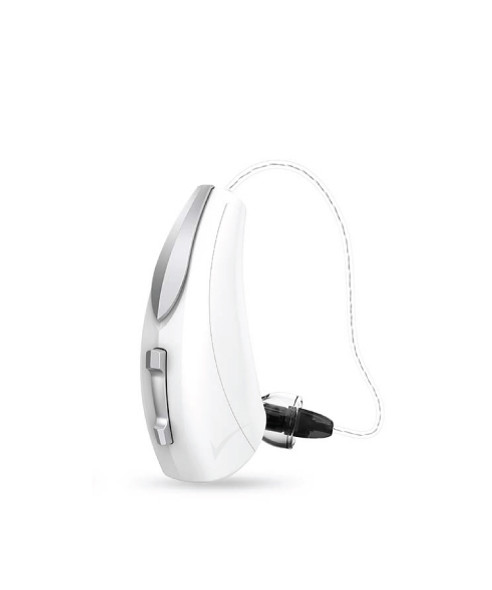

Starkey Evolv AI 1000 RIC hearing aid
Starkey
at $ 920SAVE on the latest Starkey Evolv AI hearing aids at HEARING SAVERS Our price is . Further discounts forPensioners & Veterans* Get a Quote Today! %%AI%% %%Apple%% %%Android%% %%4-Year%% %%Entry%% Effortlessly connect to better...at $ 920 -


Starkey Genesis AI CROS / BiCROS
Starkey
at $ 990For One-Sided Hearing Loss Hear from all directions and stay focused while actively participating in conversations in every listening environment. Starkey CROS If you’re unable to hear in one ear and have normal hearing in the other ear, you may...at $ 990 -


Starkey Livio 1000 Micro RIC hearing aid
Starkey
at $ 990Save $000s on the latest Starkey Livio hearing aids. Our price . Discounted forPensioners & Veterans* Get a Quote Today! Delivering superior sound clarity in discreet style Enjoy superior sound clarity, comfort and universal...at $ 990 -


Starkey Evolv AI 1000 micro RIC hearing aid
Starkey
at $ 1,020SAVE on the latest Starkey Evolv AI hearing aids at HEARING SAVERS Our price is . Further discounts forPensioners & Veterans* Get a Quote Today! Effortlessly connect to better hearing The Starkey Evolv AI hearing aid changes the game...at $ 1,020 -


Starkey Edge AI CROS / BiCROS
Starkey
at $ 1,090For One-Sided Hearing Loss Hear from all directions and stay focused while actively participating in conversations in every listening environment. Starkey CROS If you’re unable to hear in one ear and have normal hearing in the other ear, you may...at $ 1,090 -


Starkey Livio 1000 BTE R rechargeable hearing aid
Starkey
at $ 1,200Save $000s on the latest Starkey Livio hearing aids. Our price . Further discounts forPensioners & Veterans* Get a Quote Today! Delivering superior sound clarity Enjoy superior sound clarity, comfort and universal connectivity with...at $ 1,200 -


Starkey Evolv AI 1000 BTE R rechargeable hearing aid
Starkey
at $ 1,290SAVE on the latest Starkey Evolv AI hearing aids at HEARING SAVERS Our price is . Further discounts forPensioners & Veterans* Get a Quote Today! Effortlessly connect to better hearing The Starkey Evolv AI hearing aid changes the game...at $ 1,290 -
Reduced


Starkey Livio AI 1200 hearing aid
Starkey
Don't pay $ 1,795at $ 1,395SAVE an extra $800 per pair on the latest Starkey Livio hearing aids. Our price now . Our price was $3,590 October 2020. Further discounts forPensioners & Veterans* Get a Quote Today! Starkey has reinvented the hearing aid with...Don't pay $ 1,795at $ 1,395 -
Reduced


Starkey Livio AI 1200 R custom rechargeable hearing aid
Starkey
Don't pay $ 1,795at $ 1,395SAVE an extra $800 per pair on the latest Starkey Livio hearing aids. Our price now . Our price was $3,590 October 2020. Further discounts forPensioners & Veterans* Get a Quote Today! Custom. Convenient. Comfortable. Meet the world’s...Don't pay $ 1,795at $ 1,395 -
Reduced
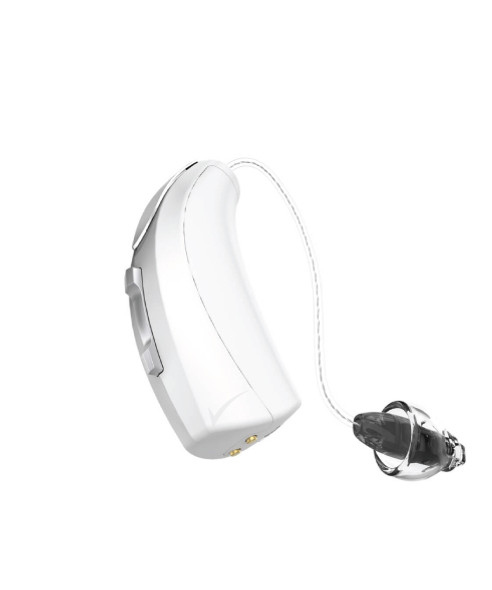

Starkey Livio AI 1200 R rechargeable hearing aid
Starkey
Don't pay $ 1,895at $ 1,495SAVE an extra $800 per pair on the latest Starkey Livio hearing aids. Our price now . Our price was $3,790 October 2020. Further discounts forPensioners & Veterans* Get a Quote Today! Starkey has reinvented the hearing aid with...Don't pay $ 1,895at $ 1,495 -


Starkey Evolv AI 1200 RIC hearing aid
Starkey
at $ 1,585SAVE on the latest Starkey Evolv AI hearing aids at HEARING SAVERS Our price is . Further discounts forPensioners & Veterans* Get a Quote Today! Effortlessly connect to better hearing The Starkey Evolv AI hearing aid changes the game...at $ 1,585 -


Starkey Evolv AI 1200 Custom invisible hearing aid
Starkey
at $ 1,680SAVE on the latest Starkey Evolv AI hearing aids at HEARING SAVERS Our price is . Further discounts forPensioners & Veterans* Get a Quote Today! Effortlessly connect to better hearing The Starkey Evolv AI hearing aid changes the game...at $ 1,680 -


Starkey Evolv AI 1200 Custom rechargeable hearing aid
Starkey
at $ 1,770SAVE on the latest Starkey Evolv AI hearing aids at HEARING SAVERS Our price is . Further discounts forPensioners & Veterans* Get a Quote Today! Effortlessly connect to better hearing The Starkey Evolv AI hearing aid changes the game...at $ 1,770 -


Starkey Evolv AI 1200 RIC R rechargeable hearing aid
Starkey
at $ 1,775SAVE on the latest Starkey Evolv AI hearing aids at HEARING SAVERS Our price is . Further discounts forPensioners & Veterans* Get a Quote Today! Effortlessly connect to better hearing The Starkey Evolv AI hearing aid changes the game...at $ 1,775 -


Starkey Genesis AI 12 RIC hearing aid
Starkey
at $ 1,990SAVE on Starkey Genesis AI hearing aids. Our price only Further discounts forPensioners & Veterans* Get a Quote Today! A big leap forward Starkey Genesis AI is completely reimagined from the inside out, featuring an all-new processor, all-new...at $ 1,990 -
Reduced
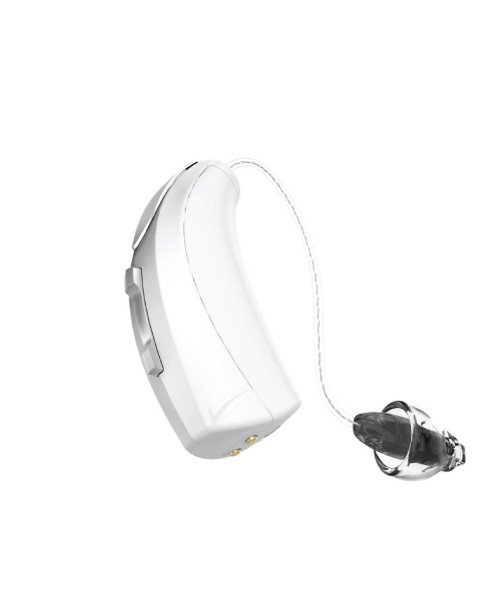

Starkey Livio AI 1600 hearing aid
Starkey
Don't pay $ 2,495at $ 2,095SAVE an extra $800 per pair on the latest Starkey Livio hearing aids. Our price now . Our price was $4,990 October 2020. Further discounts forPensioners & Veterans* Get a Quote Today! Starkey has reinvented the hearing aid with...Don't pay $ 2,495at $ 2,095 -
Reduced


Starkey Livio AI 1600 R custom rechargeable hearing aid
Starkey
Don't pay $ 2,495at $ 2,095SAVE an extra $800 per pair on the latest Starkey Livio hearing aids. Our price now . Our price was $4,990 October 2020. Further discounts forPensioners & Veterans* Get a Quote Today! Custom. Convenient. Comfortable. Meet the world’s...Don't pay $ 2,495at $ 2,095 -


Starkey Genesis AI 12 mRIC R rechargeable hearing aid
Starkey
at $ 2,180SAVE on Starkey Genesis AI hearing aids. Our price only Further discounts forPensioners & Veterans* Get a Quote Today! A big leap forward Starkey Genesis AI is completely reimagined from the inside out, featuring an all-new processor,...at $ 2,180 -


Starkey Genesis AI 12 RIC RT rechargeable hearing aid
Starkey
at $ 2,180SAVE on Starkey Genesis AI hearing aids. Our price only Further discounts forPensioners & Veterans* Get a Quote Today! A big leap forward Starkey Genesis AI is completely reimagined from the inside out, featuring an all-new processor,...at $ 2,180 -


Starkey Genesis AI 12 ITE/ITC R Custom rechargeable hearing aid
Starkey
at $ 2,190Starkey Genesis Price Crunch! SAVE on Starkey Genesis AI hearing aids. Our price now only Further discounts forPensioners & Veterans* SAVE $440 per pair!Was $5,980 per pair 20 May 2024. Get a Quote Today! A big leap forward Starkey Genesis...at $ 2,190 -
Reduced


Starkey Livio AI 1600 R rechargeable hearing aid
Starkey
Don't pay $ 2,595at $ 2,195SAVE an extra $800 per pair on the latest Starkey Livio hearing aids. Our price now . Our price was $5,190 October 2020. Further discounts forPensioners & Veterans* Get a Quote Today! Starkey has reinvented the hearing aid with...Don't pay $ 2,595at $ 2,195 -
Reduced


Starkey Edge AI 16 RIC 312 hearing aid
Starkey
Don't pay $ 2,600at $ 2,400SAVE on Starkey Edge AI hearing aids. Our price only Further discounts forPensioners & Veterans* Get a Quote Today! %%AI%% %%Apple%% %%Android%% %%Auracast%% %%4-Year%% %%Silver%% Life sounds better with an edge Starkey Edge AI puts...Don't pay $ 2,600at $ 2,400 -
Reduced


Starkey Edge AI 16 CIC wireless hearing aid
Starkey
Don't pay $ 2,700at $ 2,500SAVE on Starkey Edge AI hearing aids. Our price only Further discounts forPensioners & Veterans* Get a Quote Today! %%AI%% %%Invisible%% %%Apple%% %%Android%% %%Auracast%% %%4-Year%% %%Silver%% Life sounds better with an edge Starkey...Don't pay $ 2,700at $ 2,500 -
Reduced


Starkey Edge AI 16 custom rechargeable hearing aid
Starkey
Don't pay $ 2,700at $ 2,500SAVE on Starkey Edge AI hearing aids. Our price only Further discounts forPensioners & Veterans* Get a Quote Today! %%AI%% %%Rechargeable%% %%Apple%% %%Android%% %%Water%% %%Auracast%% %%4-Year%% %%Silver%% Life sounds better with an...Don't pay $ 2,700at $ 2,500 -
Reduced


Starkey Edge AI 16 mRIC rechargeable hearing aid
Starkey
Don't pay $ 2,700at $ 2,500SAVE on Starkey Edge AI hearing aids. Our price only Further discounts forPensioners & Veterans* Get a Quote Today! %%AI%% %%Rechargeable%% %%Apple%% %%Android%% %%Water%% %%Auracast%% %%4-Year%% %%Silver%% Life sounds better with an...Don't pay $ 2,700at $ 2,500 -
Reduced

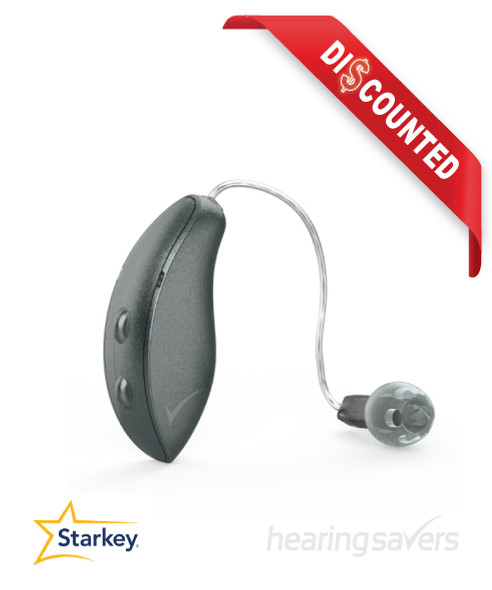
Starkey Genesis AI 16 RIC hearing aid
Starkey
Don't pay $ 2,720at $ 2,500Starkey Genesis Price Crunch! SAVE on Starkey Genesis AI hearing aids. Our price now only Further discounts forPensioners & Veterans* SAVE $440 per pair!Was $5,440 per pair 20 May 2024. Get a Quote Today! A big leap forward Starkey Genesis...Don't pay $ 2,720at $ 2,500 -
Reduced


Starkey Genesis AI 16 CIC hearing aid
Starkey
Don't pay $ 2,760at $ 2,540Starkey Genesis Price Crunch! SAVE on Starkey Genesis AI hearing aids. Our price now only Further discounts forPensioners & Veterans* SAVE $440 per pair!Was $5,520 per pair 20 May 2024. Get a Quote Today! A big leap forward Starkey Genesis...Don't pay $ 2,760at $ 2,540 -
Reduced


Starkey Edge AI 20 RIC 312 hearing aid
Starkey
Don't pay $ 3,100at $ 2,700SAVE on Starkey Edge AI hearing aids. Our price only Further discounts forPensioners & Veterans* Get a Quote Today! %%AI%% %%Apple%% %%Android%% %%Auracast%% %%4-Year%% %%Gold%% Life sounds better with an edge Starkey Edge AI puts you...Don't pay $ 3,100at $ 2,700 -


Starkey Signature 16 CIC custom hearing aid
Starkey
at $ 2,700SAVE $000s on the latest Starkey Signature hearing aids. Our price Further discounts forPensioners & Veterans* Get a Quote Today! %%AI%% %%Invisible%% %%4-Year%% %%Silver%% Forever change your perception of hearing aids Everyone...at $ 2,700 -
Reduced
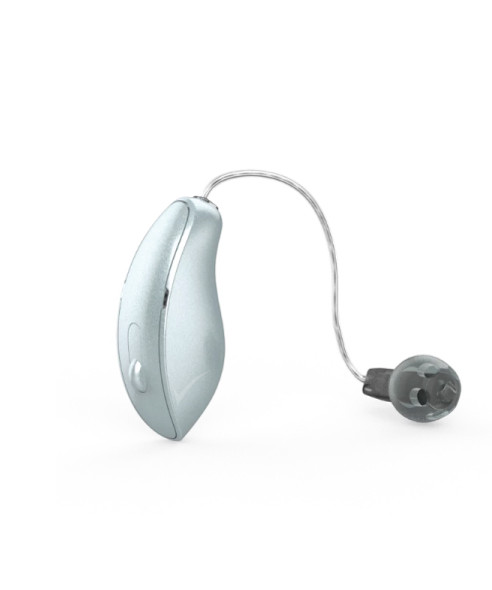

Starkey Genesis AI 16 mRIC R rechargeable hearing aid
Starkey
Don't pay $ 2,980at $ 2,760Starkey Genesis Price Crunch! SAVE on Starkey Genesis AI hearing aids. Our price now only Further discounts forPensioners & Veterans* SAVE $440 per pair!Was $5,960 per pair 20 May 2024. Get a Quote Today! A big leap forward Starkey Genesis...Don't pay $ 2,980at $ 2,760 -
Reduced


Starkey Genesis AI 16 RIC RT rechargeable hearing aid
Starkey
Don't pay $ 2,980at $ 2,760Starkey Genesis Price Crunch! SAVE on Starkey Genesis AI hearing aids. Our price now only Further discounts forPensioners & Veterans* SAVE $440 per pair!Was $5,960 per pair 20 May 2024. Get a Quote Today! A big leap forward Starkey Genesis...Don't pay $ 2,980at $ 2,760 -
Reduced


Starkey Genesis AI 16 CIC wireless hearing aid
Starkey
Don't pay $ 2,990at $ 2,770Starkey Genesis Price Crunch! SAVE on Starkey Genesis AI hearing aids. Our price now only Further discounts forPensioners & Veterans* SAVE $440 per pair!Was $5,980 per pair 20 May 2024. Get a Quote Today! A big leap forward Starkey Genesis...Don't pay $ 2,990at $ 2,770 -
Reduced


Starkey Genesis AI 16 ITE/ITC R Custom rechargeable hearing aid
Starkey
Don't pay $ 2,990at $ 2,770Starkey Genesis Price Crunch! SAVE on Starkey Genesis AI hearing aids. Our price now only Further discounts forPensioners & Veterans* SAVE $440 per pair!Was $5,980 per pair 20 May 2024. Get a Quote Today! A big leap forward Starkey Genesis...Don't pay $ 2,990at $ 2,770 -
Reduced


Starkey Edge AI 20 mRIC rechargeable hearing aid
Starkey
Don't pay $ 3,200at $ 2,800SAVE on Starkey Edge AI hearing aids. Our price only Further discounts forPensioners & Veterans* Get a Quote Today! %%AI%% %%Rechargeable%% %%Apple%% %%Android%% %%Water%% %%Auracast%% %%4-Year%% %%Gold%% Life sounds better with an...Don't pay $ 3,200at $ 2,800 -


Starkey Signature 16 CIC custom rechargeable hearing aid
Starkey
at $ 2,800SAVE $000s on the latest Starkey Signature hearing aids. Our price Further discounts forPensioners & Veterans* Get a Quote Today! %%Invisible%% %%Rechargeable%% %%Water%% %%4-Year%% %%Silver%% Forever change your perception of...at $ 2,800 -
Reduced


Starkey Livio AI 2000 hearing aid
Starkey
Don't pay $ 3,295at $ 2,895SAVE an extra $800 per pair on the latest Starkey Livio hearing aids. Our price now . Our price was $6,590 October 2020. Further discounts forPensioners & Veterans* Get a Quote Today! Starkey has reinvented the hearing aid with...Don't pay $ 3,295at $ 2,895 -
Reduced
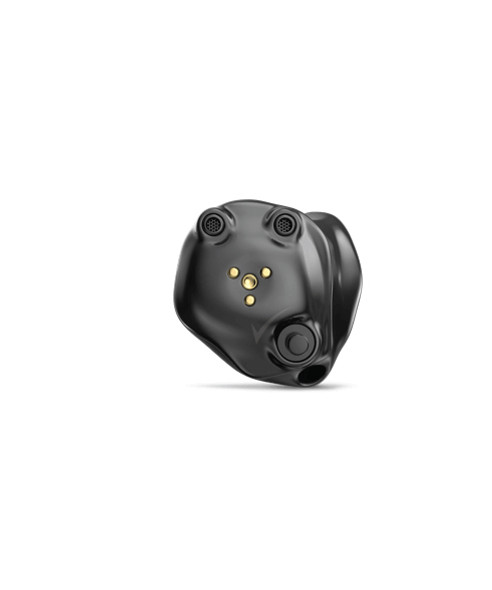

Starkey Livio AI 2000 R custom rechargeable hearing aid
Starkey
Don't pay $ 3,295at $ 2,895SAVE an extra $800 per pair on the latest Starkey Livio hearing aids. Our price now . Our price was $6,590 October 2020. Further discounts forPensioners & Veterans* Get a Quote Today! Custom. Convenient. Comfortable. Meet the world’s...Don't pay $ 3,295at $ 2,895 -
Reduced


Starkey Livio AI 2000 R rechargeable hearing aid
Starkey
Don't pay $ 3,395at $ 2,995SAVE an extra $800 per pair on the latest Starkey Livio hearing aids. Our price now . Our price was $6,790 October 2020. Further discounts forPensioners & Veterans* Get a Quote Today! Starkey has reinvented the hearing aid with...Don't pay $ 3,395at $ 2,995 -
Reduced


Starkey Edge AI 20 CIC wireless hearing aid
Starkey
Don't pay $ 3,200at $ 3,000SAVE on Starkey Edge AI hearing aids. Our price only Further discounts forPensioners & Veterans* Get a Quote Today! %%AI%% %%Invisible%% %%Apple%% %%Android%% %%Auracast%% %%4-Year%% %%Gold%% Life sounds better with an edge Starkey...Don't pay $ 3,200at $ 3,000 -
Reduced


Starkey Edge AI 20 custom rechargeable hearing aid
Starkey
Don't pay $ 3,200at $ 3,000SAVE on Starkey Edge AI hearing aids. Our price only Further discounts forPensioners & Veterans* Get a Quote Today! %%AI%% %%Rechargeable%% %%Apple%% %%Android%% %%Water%% %%Auracast%% %%4-Year%% %%Gold%% Life sounds better with an...Don't pay $ 3,200at $ 3,000 -
ReducedFREE TV Streamer


Starkey Edge AI 24 RIC 312 hearing aid
Starkey
Don't pay $ 3,200at $ 3,010Starkey Edge Spring Deal! Offer ends 28 Nov 2025 *** Extended to 24 Dec 2025 *** SAVE on Starkey Edge AI hearing aids. Our price only Further discounts forPensioners & Veterans* Get a Quote Today! %%AI%%...Don't pay $ 3,200at $ 3,010 -
ReducedFREE TV Streamer


Starkey Edge AI 24 mRIC rechargeable hearing aid
Starkey
Don't pay $ 3,300at $ 3,020Starkey Edge Spring Deal! Offer ends 28 Nov 2025 *** Extended to 24 Dec 2025 *** SAVE on Starkey Edge AI hearing aids. Our price only Further discounts forPensioners & Veterans* Get a Quote Today! %%AI%%...Don't pay $ 3,300at $ 3,020 -
Reduced
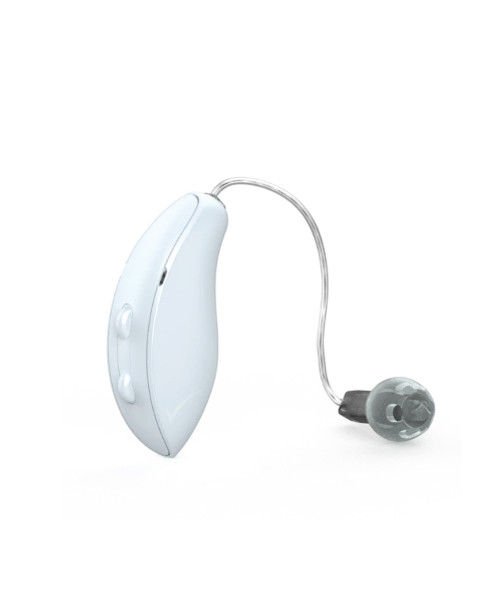

Starkey Genesis AI 20 RIC hearing aid
Starkey
Don't pay $ 3,320at $ 3,020Starkey Genesis Price Crunch! SAVE on Starkey Genesis AI hearing aids. Our price now only Further discounts forPensioners & Veterans* Get a Quote Today! A big leap forward Starkey Genesis AI is completely reimagined from the inside out,...Don't pay $ 3,320at $ 3,020 -
Reduced

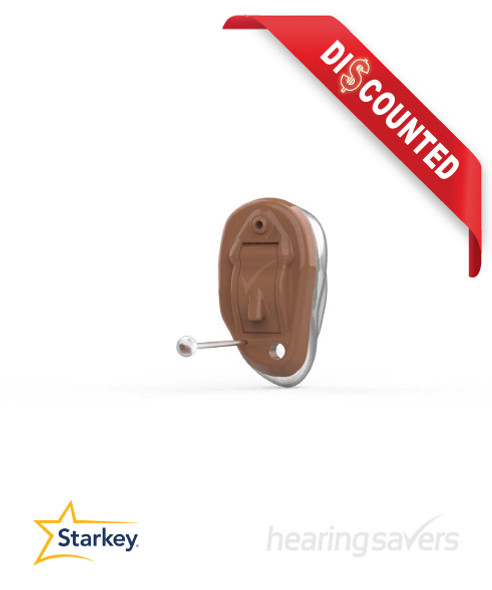
Starkey Genesis AI 20 CIC hearing aid
Starkey
Don't pay $ 3,360at $ 3,060Starkey Genesis Price Crunch! SAVE on Starkey Genesis AI hearing aids. Our price now only Further discounts forPensioners & Veterans* SAVE $600 per pair!Was $6,720 per pair 20 May 2024. Get a Quote Today! A big leap forward Starkey Genesis...Don't pay $ 3,360at $ 3,060 -


Starkey Signature 20 CIC custom hearing aid
Starkey
at $ 3,100SAVE $000s on the latest Starkey Signature hearing aids. Our price Further discounts forPensioners & Veterans* Get a Quote Today! %%AI%% %%Invisible%% %%4-Year%% %%Gold%% Forever change your perception of hearing aids Everyone...at $ 3,100 -
Reduced

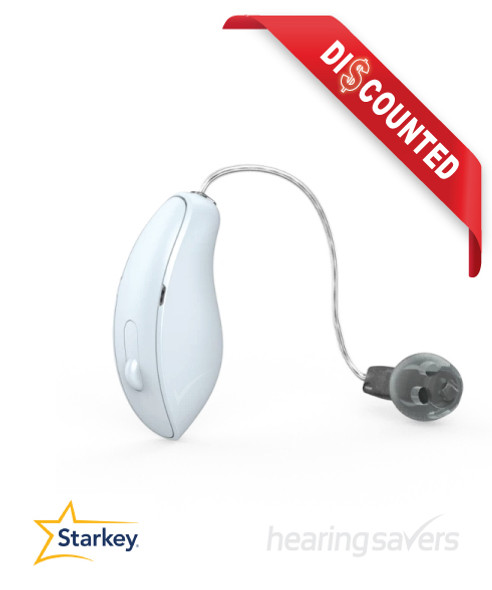
Starkey Genesis AI 20 mRIC R rechargeable hearing aid
Starkey
Don't pay $ 3,480at $ 3,180Starkey Genesis Price Crunch! SAVE on Starkey Genesis AI hearing aids. Our price now only Further discounts forPensioners & Veterans* Get a Quote Today! A big leap forward Starkey Genesis AI is completely reimagined from the inside out,...Don't pay $ 3,480at $ 3,180 -
Reduced


Starkey Genesis AI 20 RIC RT rechargeable hearing aid
Starkey
Don't pay $ 3,480at $ 3,180Starkey Genesis Price Crunch! SAVE on Starkey Genesis AI hearing aids. Our price now only Further discounts forPensioners & Veterans* Get a Quote Today! A big leap forward Starkey Genesis AI is completely reimagined from the inside...Don't pay $ 3,480at $ 3,180 -
Reduced


Starkey Genesis AI 20 CIC wireless hearing aid
Starkey
Don't pay $ 3,490at $ 3,190Starkey Genesis Price Crunch! SAVE on Starkey Genesis AI hearing aids. Our price now only Further discounts forPensioners & Veterans* SAVE $600 per pair!Was $6,980 per pair 20 May 2024. Get a Quote Today! A big leap forward Starkey Genesis...Don't pay $ 3,490at $ 3,190 -
Reduced


Starkey Genesis AI 20 ITE/ITC R Custom rechargeable hearing aid
Starkey
Don't pay $ 3,490at $ 3,190Starkey Genesis Price Crunch! SAVE on Starkey Genesis AI hearing aids. Our price now only Further discounts forPensioners & Veterans* SAVE $600 per pair!Was $6,980 per pair 20 May 2024. Get a Quote Today! A big leap forward Starkey Genesis...Don't pay $ 3,490at $ 3,190 -


Starkey Signature 20 CIC custom rechargeable hearing aid
Starkey
at $ 3,200SAVE $000s on the latest Starkey Signature hearing aids. Our price Further discounts forPensioners & Veterans* Get a Quote Today! %%Invisible%% %%Rechargeable%% %%Water%% %%4-Year%% %%Gold%% Forever change your perception of...at $ 3,200 -
Reduced


Starkey Livio Edge AI 2400 BTE hearing aid
Starkey
at $ 3,400Our price now . Further discounts forPensioners & Veterans* Get a Quote Today! Game changing sound with Edge Mode With Livio Edge AI, the power of artificial intelligence is at your fingertips, giving you next generation sound...at $ 3,400 -
Reduced


Starkey Livio Edge AI 2400 hearing aid
Starkey
Don't pay $ 3,800at $ 3,400SAVE an extra $800 per pair on the latest Starkey Livio hearing aids. Our price now . Our price was $7,600 October 2020. Further discounts forPensioners & Veterans* Get a Quote Today! Game changing sound with Edge Mode With Livio Edge...Don't pay $ 3,800at $ 3,400 -
Reduced


Starkey Genesis AI 24 RIC hearing aid
Starkey
Don't pay $ 3,820at $ 3,420Starkey Genesis Price Crunch! SAVE on Starkey Genesis AI hearing aids. Our price now only Further discounts forPensioners & Veterans* Get a Quote Today! A big leap forward Starkey Genesis AI is completely reimagined from the inside out,...Don't pay $ 3,820at $ 3,420 -
Reduced
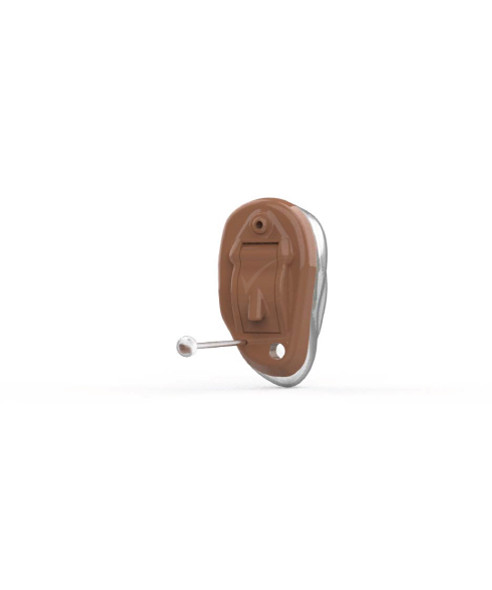

Starkey Genesis AI 24 CIC hearing aid
Starkey
Don't pay $ 3,860at $ 3,460Starkey Genesis Price Crunch! SAVE on Starkey Genesis AI hearing aids. Our price now only Further discounts forPensioners & Veterans* SAVE $800 per pair!Was $7,720 per pair 20 May 2024. Get a Quote Today! A big leap forward Starkey Genesis...Don't pay $ 3,860at $ 3,460 -
Reduced


Starkey Genesis AI 24 mRIC R rechargeable hearing aid
Starkey
Don't pay $ 3,980at $ 3,580Starkey Genesis Price Crunch! SAVE on Starkey Genesis AI hearing aids. Our price now only Further discounts forPensioners & Veterans* Get a Quote Today! A big leap forward Starkey Genesis AI is completely reimagined from the inside...Don't pay $ 3,980at $ 3,580 -
Reduced


Starkey Genesis AI 24 RIC RT rechargeable hearing aid
Starkey
Don't pay $ 3,980at $ 3,580Starkey Genesis Price Crunch! SAVE on Starkey Genesis AI hearing aids. Our price now only Further discounts forPensioners & Veterans* Get a Quote Today! A big leap forward Starkey Genesis AI is completely reimagined from the inside out,...Don't pay $ 3,980at $ 3,580 -
Reduced


Starkey Genesis AI 24 CIC wireless hearing aid
Starkey
Don't pay $ 3,990at $ 3,590Starkey Genesis Price Crunch! SAVE on Starkey Genesis AI hearing aids. Our price now only Further discounts forPensioners & Veterans* SAVE $800 per pair!Was $7,980 per pair 20 May 2024. Get a Quote Today! A big leap forward Starkey Genesis...Don't pay $ 3,990at $ 3,590 -
Reduced


Starkey Genesis AI 24 ITE/ITC R Custom rechargeable hearing aid
Starkey
Don't pay $ 3,990at $ 3,590Starkey Genesis Price Crunch! SAVE on Starkey Genesis AI hearing aids. Our price now only Further discounts forPensioners & Veterans* SAVE $800 per pair!Was $7,980 per pair 20 May 2024. Get a Quote Today! A big leap forward Starkey Genesis...Don't pay $ 3,990at $ 3,590 -
Reduced


Starkey Livio Edge AI 2400 R custom rechargeable hearing aid
Starkey
Don't pay $ 3,995at $ 3,595SAVE an extra $800 per pair on the latest Starkey Livio hearing aids. Our price now . Our price was $7,990 October 2020. Further discounts forPensioners & Veterans* Get a Quote Today! Custom. Convenient. Comfortable. Meet the world’s...Don't pay $ 3,995at $ 3,595 -
Reduced


Starkey Livio Edge AI 2400 R rechargeable hearing aid
Starkey
Don't pay $ 3,995at $ 3,595SAVE an extra $800 per pair on the latest Starkey Livio hearing aids. Our price now . Our price was $7,990 October 2020. Further discounts forPensioners & Veterans* Get a Quote Today! Game changing sound with Edge Mode With Livio Edge...Don't pay $ 3,995at $ 3,595 -


Starkey Signature 24 CIC custom hearing aid
Starkey
at $ 3,595SAVE $000s on the latest Starkey Signature hearing aids. Our price Further discounts forPensioners & Veterans* Get a Quote Today! %%AI%% %%Invisible%% %%4-Year%% %%Platinum%% Forever change your perception of hearing...at $ 3,595 -


Starkey Signature 24 IIC custom hearing aid
Starkey
at $ 3,595SAVE $000s on the latest Starkey Signature hearing aids. Our price Further discounts forPensioners & Veterans* Get a Quote Today! %%Invisible%% %%4-Year%% %%Platinum%% Forever change your perception of hearing aids Everyone...at $ 3,595 -


Starkey Livio Edge AI 2400 BTE R rechargeable hearing aid
Starkey
at $ 3,600Our price now . Further discounts forPensioners & Veterans* Get a Quote Today! Game changing sound with Edge Mode With Livio Edge AI, the power of artificial intelligence is at your fingertips, giving you next generation sound...at $ 3,600 -
Reduced


Starkey Edge AI 24 CIC wireless hearing aid
Starkey
Don't pay $ 4,000at $ 3,700SAVE on Starkey Edge AI hearing aids. Our price only Further discounts forPensioners & Veterans* Get a Quote Today! %%AI%% %%Invisible%% %%Apple%% %%Android%% %%Auracast%% %%4-Year%% %%Platinum%% Life sounds better with an...Don't pay $ 4,000at $ 3,700 -
Reduced


Starkey Edge AI 24 custom rechargeable hearing aid
Starkey
Don't pay $ 4,000at $ 3,700SAVE on Starkey Edge AI hearing aids. Our price only Further discounts forPensioners & Veterans* Get a Quote Today! %%AI%% %%Rechargeable%% %%Apple%% %%Android%% %%Water%% %%Auracast%% %%4-Year%% %%Platinum%% Life sounds better with an...Don't pay $ 4,000at $ 3,700 -


Starkey Signature 24 CIC custom rechargeable hearing aid
Starkey
at $ 3,745SAVE $000s on the latest Starkey Signature hearing aids. Our price Further discounts forPensioners & Veterans* Get a Quote Today! %%AI%% %%Invisible%% %%Rechargeable%% %%Water%% %%4-Year%% %%Platinum%% Forever change your...at $ 3,745


























